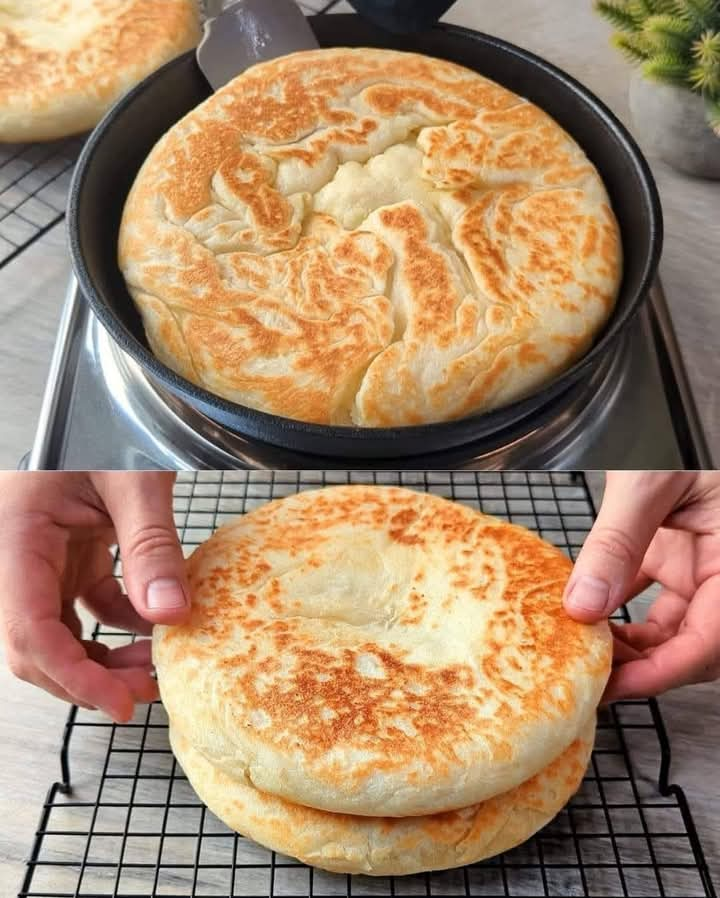Introduction
Baking your own bread at home is a rewarding and comforting experience. There’s something about the smell of fresh bread filling the house that makes it feel like home.
Plus, when you make it yourself, you get the satisfaction of knowing exactly what’s in it, without any preservatives or unnecessary ingredients.
This easy homemade bread recipe is perfect for beginners and anyone looking to enjoy a delicious, fresh loaf with minimal effort.
Ingredients
3 ¼ cups all-purpose flour
1 packet (2 ¼ tsp) active dry yeast
1 ½ tsp salt
1 tbsp sugar
1 ¼ cups warm water (about 110°F)
2 tbsp olive oil or melted butter (optional for a richer flavor)
Instructions
Start by preparing the yeast mixture. In a bowl, combine warm water with sugar, stirring until the sugar dissolves.
Sprinkle the active dry yeast over the surface of the water and let it sit for about 5 to 10 minutes until it becomes foamy. This step helps to activate the yeast and ensure it will rise properly.
While the yeast is activating, sift the all-purpose flour into a large bowl. Add salt to the flour and mix to combine.
Once the yeast mixture is foamy, pour it into the flour mixture along with the olive oil or melted butter if you’re using it.
Stir the mixture with a wooden spoon or spatula until the dough begins to come together. If it seems.
too sticky, add a little extra flour, a tablespoon at a time, until you get a soft dough that’s easy to handle.
Once the dough has formed, turn it out onto a lightly floured surface. Knead the dough for about 8 to 10 minutes until it becomes smooth and elastic.
If the dough is too sticky, sprinkle a little more flour on the surface, but avoid adding too much flour as it can make the bread dense.
Place the kneaded dough in a lightly oiled bowl and cover it with a clean kitchen towel. Let it rise in a warm.
place for about an hour or until it doubles in size. This is the first rise, and it’s important for giving the bread its light and airy texture.
After the dough has risen, punch it down to release any air bubbles. Shape it into a loaf by folding.
the dough over itself and pinching the seams together. Place the loaf on a greased or parchment-lined baking sheet, cover it with a towel, and let it rise again for about 30 minutes.
Preheat your oven to 375°F (190°C). Once the second rise is complete, place the loaf in the oven and bake.
for 25 to 30 minutes or until the top is golden brown and the bread sounds hollow when tapped on the bottom.
How to Make
Start by gathering your ingredients, ensuring you have all the necessary items on hand before you begin. Once you’ve activated the yeast with warm water and sugar.
you can move quickly through the rest of the steps. Make sure to knead the dough thoroughly to develop the gluten.
which is key to creating a light and airy loaf. Be patient during the rise times – it’s during this stage that the dough gets its fluffy texture.
For a richer flavor, don’t skip the option of adding olive oil or melted butter. It helps the bread stay moist and adds a nice depth of taste.
When shaping the loaf, make sure to fold the dough tightly to avoid any gaps that might cause the bread to rise unevenly.
Once your bread is in the oven, resist the urge to open the door too often, as this can interfere with the baking process.
Check for doneness by tapping the bottom of the loaf; if it sounds hollow, it’s ready to come out.
Tips
If you don’t have a thermometer to check the water temperature, you can test it by dipping your finger in. It should feel warm but not hot to the touch, about 110°F.
For an even fluffier loaf, try using bread flour instead of all-purpose flour. Bread flour has more protein and will help develop more gluten, resulting in a chewier, airier texture.
If you don’t have olive oil or butter, you can simply omit it for a more basic loaf. The bread will still turn out delicious, just a bit less rich.
To enhance the flavor, consider adding herbs like rosemary, thyme, or garlic powder to the dough. This can give the bread a savory kick, perfect for serving alongside pasta or salads.
If you prefer a crustier exterior, bake the bread in a preheated Dutch oven or cover it with foil during.
the first part of baking to retain moisture. Removing the cover toward the end allows the bread to develop a crispy, golden crust.
If you’re making more than one loaf, you can freeze the dough after the first rise. Simply shape it.
cover tightly with plastic wrap, and freeze for up to three months. When you’re ready, allow the dough to thaw and rise again before baking.
For a rustic look, use a sharp knife to make shallow slashes on top of the dough before baking. This will help the bread expand evenly and gives it a professional finish.
Conclusion
Homemade bread is one of life’s simple pleasures, and this easy recipe proves that baking at home doesn’t have to be complicated.
With just a few ingredients and some patience, you can enjoy a warm, delicious loaf that beats store-bought any day.
Whether you’re baking for yourself or sharing with family and friends, this bread will surely become a favorite in your kitchen.
